- Is there a “tornado season”?
- No. According to the National Weather Service, tornadoes can occur year-round anywhere in the contiguous United States. The peak time for tornadoes for the Southern Plains (e.g., Texas, Oklahoma, and Kansas) is from May to early June. On the Gulf Coast, it is earlier in the spring. In the Northern Plains and upper Midwest, tornadoes often occur in June or July.
- Should I seek shelter under an overpass during a tornado?
- No. Using an overpass as a shelter can put you at a much greater risk of being killed or seriously injured by a tornado. The narrow passage underneath an overpass could cause an increase in the wind speed under the bridge.
- Is it better to drive away and try to outrun a tornado, or should I stay in place?
- Usually, it’s better to stay in place. Tornadoes do not follow a specific path or route and can change direction at any time, so attempting to drive away is a dangerous choice.
- Do tornadoes ever strike twice?
- Yes. From 2010-2015 alone, tornadoes struck Moore, Oklahoma, repeatedly. In Guy, Arkansas, three tornadoes hit the same church on the same day. Tornadoes struck Cordell, Kansas, three years in a row on May 20.
- Does seeking shelter in the southwest corner of your home protect you from flying debris?
- No. There is a misconception that all tornadoes move to the northeast. Tornadoes can move in any direction. The best place to seek shelter is in a FEMA P-320 safe room, ICC 500 certified shelter, or a windowless interior room on the lowest floor of your home.
- What is a tornado safe room or certified storm shelter?
- A safe room is a small, typically above-ground structure that can provide near-absolute life safety protection and withstand extreme winds, even EF-4 or EF-5 tornadoes. FEMA safe rooms for one- and two-family residences are designed and constructed using the drawings and criteria in FEMA P-320. Certified storm shelters are fabricated or built with methods that are tested and approved to meet the ICC 500 standard.Doors and door systems are critical components in tornado safe room construction and storm shelter manufacturing. Special attention is given to ensure that doors provide pressure- and debris-impact resistance.According to FEMA, having a safe room has been shown to increase home value and sales price by 3.5%. This means that a tornado safe room can not only save your life, but it may make your home more valuable too.


Test Your Tornado IQ

Test Your Tornado IQ

Do you know everything you need to know about protecting yourself, your family and your home against tornadoes? Check out these frequently asked questions to find out.
Download Fact Sheet